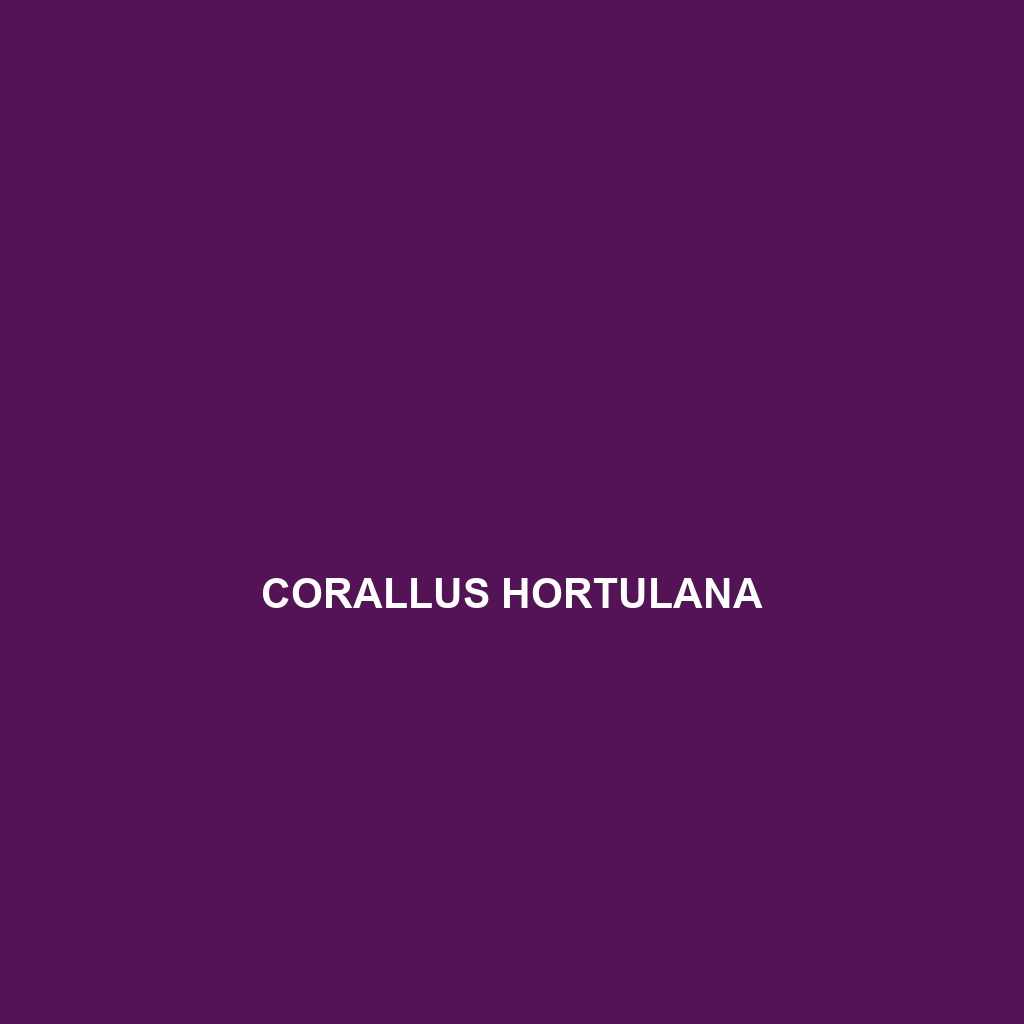Corallus hortulana Species Description
Common Name: Corallus hortulana
Scientific Name: Corallus hortulana
Habitat
Corallus hortulana, commonly known as the Amazon Tree Boa, is primarily found in the tropical rainforests of South America. This species thrives in countries such as Brazil, Colombia, and Venezuela, often inhabiting areas close to water sources like rivers and streams. The humid environment provides the ideal conditions for hunting and basking.
Physical Characteristics
The Amazon Tree Boa can reach an impressive length of up to 10 feet (3 meters) and typically weighs between 4 to 10 pounds (1.8 to 4.5 kg). Its coloration ranges from vibrant green to earthy browns, often adorned with distinctive patterns that provide excellent camouflage amidst the foliage. Notable features include its prehensile tail, which aids in climbing, and large, forward-facing eyes that enhance its night vision.
Behavior
Corallus hortulana exhibits fascinating behavioral traits. They are primarily nocturnal, engaging in hunting and movement during the night. This species is known for its unique ambush hunting technique, often waiting motionless on branches until prey, such as birds and small mammals, come within striking distance. Additionally, they display a variety of social behaviors, including thermoregulation through basking in sunlit areas.
Diet
The diet of the Amazon Tree Boa mainly consists of small mammals and birds. Utilizing its keen sense of smell and sharp reflexes, Corallus hortulana effectively captures its prey, using constriction to subdue it. This species plays a crucial role in controlling the populations of its prey, highlighting its importance in the local food web.
Reproduction
Corallus hortulana is ovoviviparous, meaning that young are born live rather than hatching from eggs. The breeding season typically occurs from May to July, with females giving birth to 10 to 20 offspring. Newborns are about 2 feet (0.6 meters) long and exhibit similar coloration to adults, aiding in their survival from predators during their early days.
Conservation Status
The conservation status of Corallus hortulana is currently classified as Least Concern according to the IUCN, though habitat destruction and the illegal pet trade pose threats to local populations. Ongoing conservation efforts aim to protect their natural habitats and ensure sustainable practices.
Interesting Facts
One fascinating aspect of Corallus hortulana is its ability to change color slightly based on its surroundings, enhancing its camouflage. Additionally, this species has a remarkable lifespan and can live in captivity for over 20 years, making them popular among reptile enthusiasts.
Role in Ecosystem
As a predator, Corallus hortulana plays a vital role in maintaining the ecological balance within its habitat. By regulating the population of small mammals and birds, this species contributes to a functioning ecosystem, ensuring diverse wildlife and healthy forest environments.
